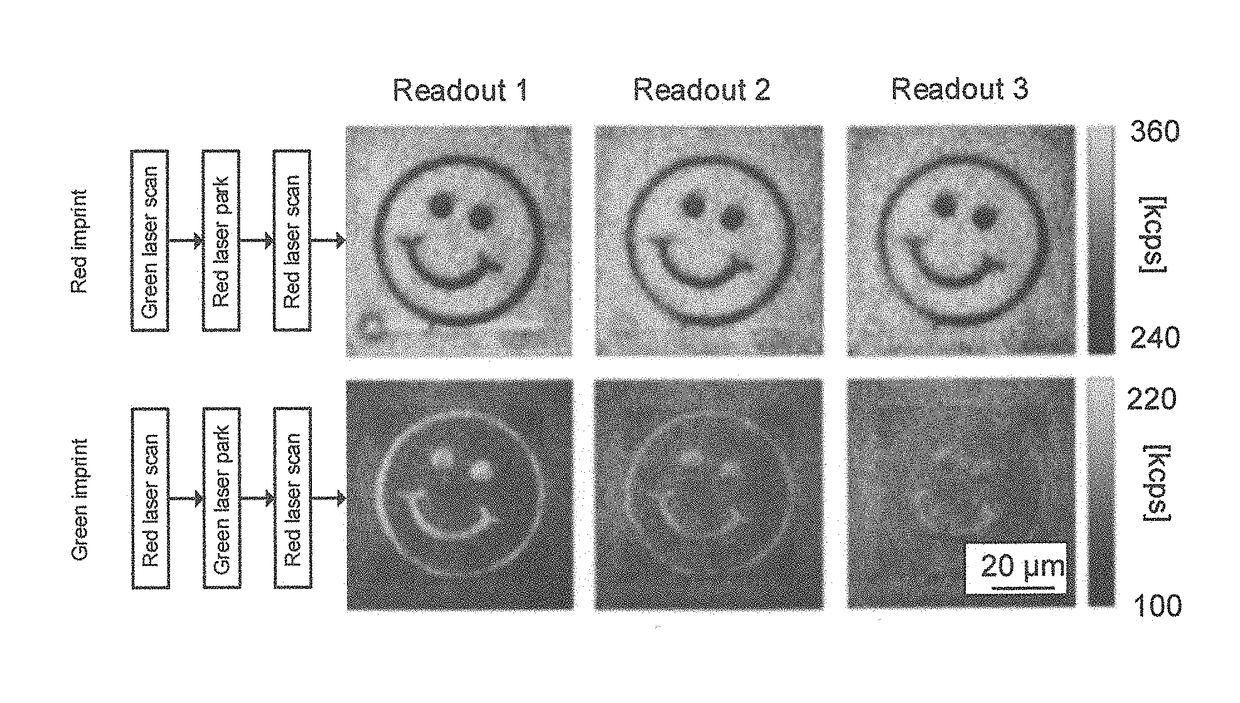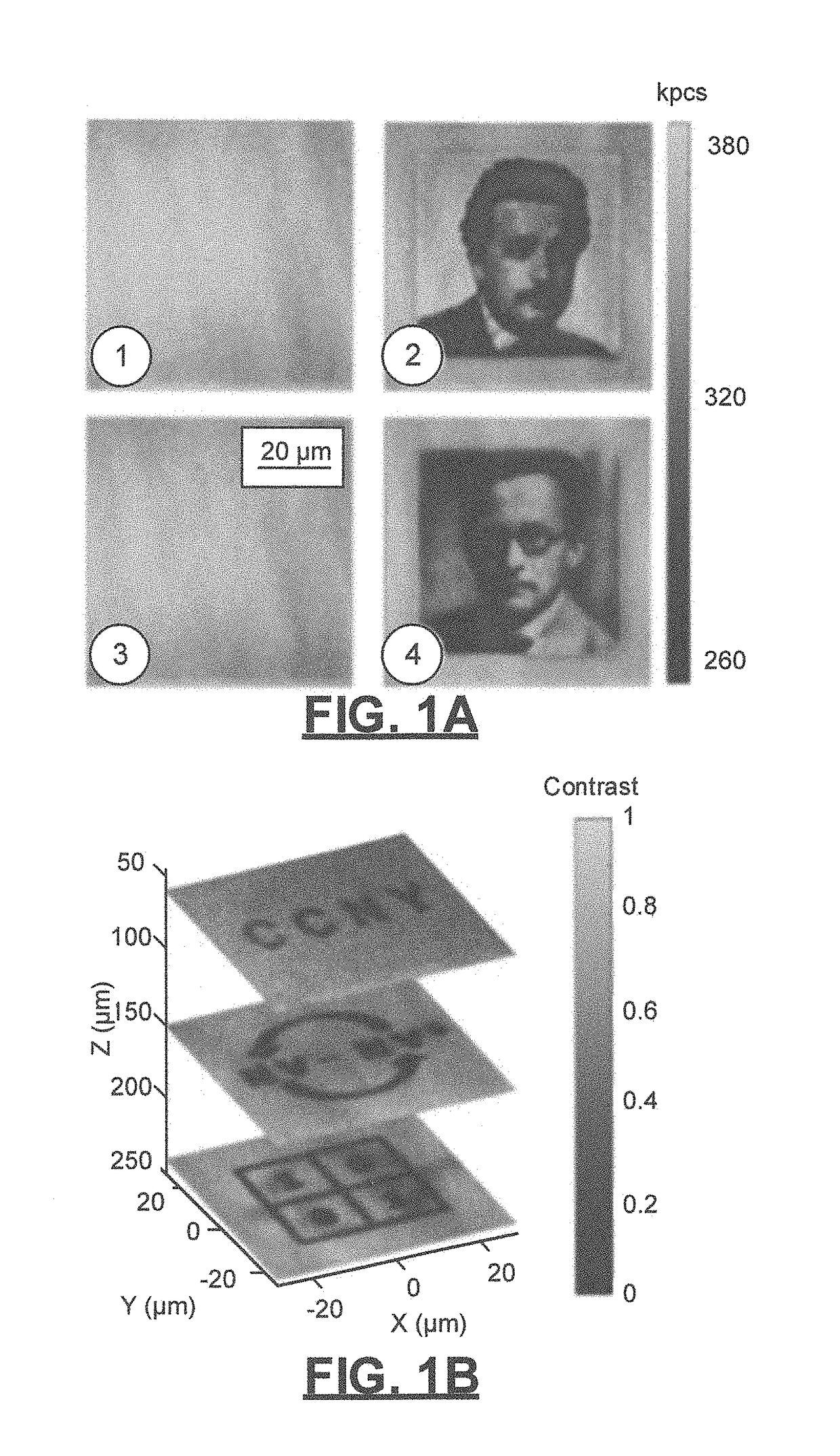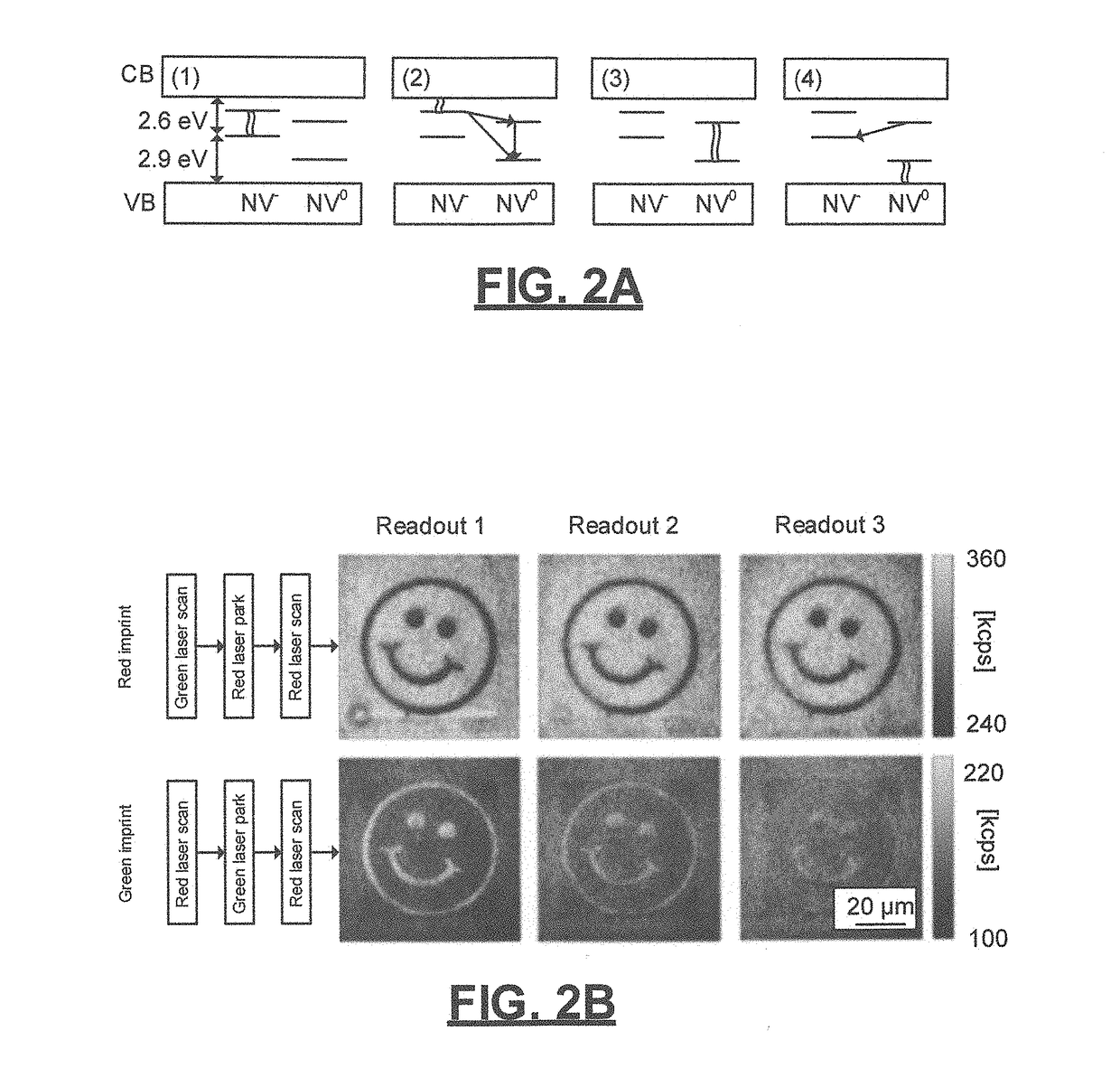Method for ultra-dense data storage via optically-controllable paramagnetic centers
a paramagnetic center and optical control technology, applied in the field of digital data storage, can solve the problems of specific shortcomings of storage methods and no such storage device has proven to be entirely satisfactory
- Summary
- Abstract
- Description
- Claims
- Application Information
AI Technical Summary
Benefits of technology
Problems solved by technology
Method used
Image
Examples
Embodiment Construction
[0069]This disclosure introduces a new type of digital memory based on the manipulation of the charge state of defects in diamond. The disclosed method uses the so-called nitrogen-vacancy (NV) center, formed by a substitutional nitrogen impurity adjacent to a vacant lattice site. The charge state of an NV can be changed from neutral to negative with the use of light pulses of suitable wavelength. This change—which alters the NV fluorescence from dark to bright—is reversible, long-lasting, and robust to weak illumination, and hence serves as a platform for long-term data storage. Using alternative encoding protocols, arbitrary data sets have been written, read, erased which, without loss of generality, is present in FIG. 1A and FIG. 1B in the form of two-dimensional images. These images can be stacked on parallel planes, thus demonstrating three-dimensional data storage.
[0070]Point defects, such as the nitrogen-vacancy center, serve as local traps, where photo-generated carriers can ...
PUM
 Login to View More
Login to View More Abstract
Description
Claims
Application Information
 Login to View More
Login to View More - R&D
- Intellectual Property
- Life Sciences
- Materials
- Tech Scout
- Unparalleled Data Quality
- Higher Quality Content
- 60% Fewer Hallucinations
Browse by: Latest US Patents, China's latest patents, Technical Efficacy Thesaurus, Application Domain, Technology Topic, Popular Technical Reports.
© 2025 PatSnap. All rights reserved.Legal|Privacy policy|Modern Slavery Act Transparency Statement|Sitemap|About US| Contact US: help@patsnap.com



